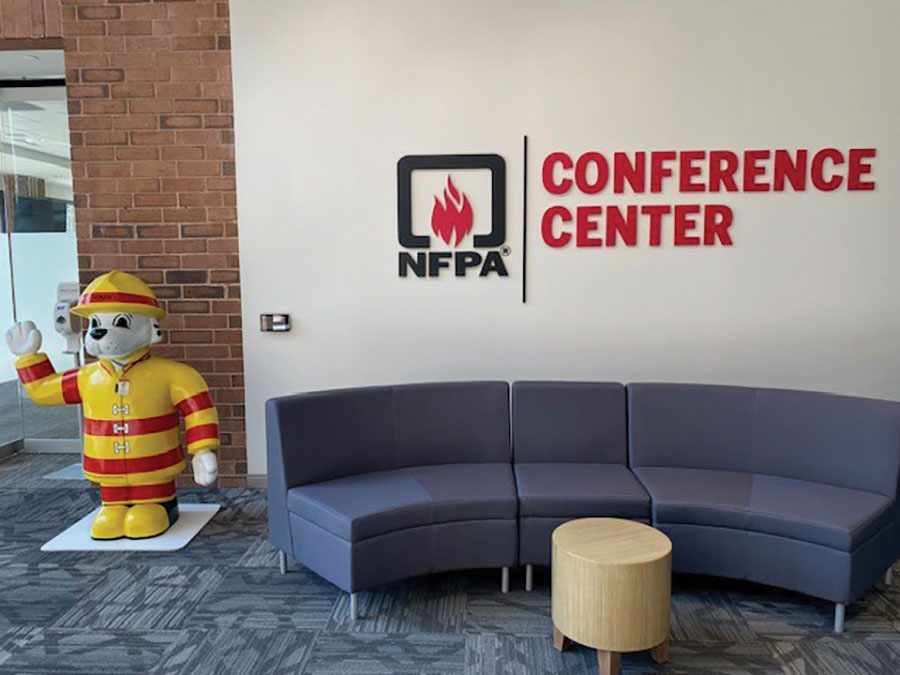Unfortunately, understanding is often blocked by filters, many of which are not of our own choosing and work automatically. Languages we do not speak or unfamiliar types of music or environmental noise effectively prevent our being aware of some things. We don’t understand, so we tune out; we don’t hear. Even focus can be a filter; how often have we been so “zoned in” on something that we become unaware of new or additional information?
One of the challenges of a technical magazine is to write in a style and a language that readers will understand. Too often, jargon — the language and vocabulary of a particular trade, profession or group — along with information overload, selective recognition or preconceived ideas filter rather than clarify understanding. To understand, many of us need to break the filters so that we can hear.
In this issue, Steve Foran breaks the filter of taking things for granted and points out that although our safety is highly dependent on a system and the involvement of others, we cannot ignore our own critical roles in safeguarding it.
Randy Hunter examines Article 210, which covers branch circuits, and Article 430, which includes the special and unique requirements related to motors, particularly in connection with branch circuits. With combination loads that include motors and other utilization equipment, then both Articles 210 and 430 will apply.
Jesse Abercrombie tackles procrastination and urges all of us to set up retirement plans both for our businesses and for ourselves.
Les Stoch discusses issues that can come up when billboard signs are located too near overhead lines passing horizontal to or above the signs. These situations “create safety hazards for the owners of the signs, the sign installers, the sign maintainers and the owners of the lines who are most often electrical and communications utilities.”
Even though photovoltaic power systems are new technology, John Wiles looks ahead at “PV modules and PV arrays that will be producing dangerous amounts of voltage and current for the next 50 years,” and examines grounding and AC output connections.
Guest author Steve Montgomery points out that “electrical systems are designed to efficiently deliver power to utilization devices, where it is usually converted into heat, light and movement.” Improper installation or faults in the distribution system, however, can cause excessive heat that will “degrade wiring components over time, and can ignite wire insulation itself or adjacent fuels…. If fault detection occurs before flammables ignite, a pending fire can be prevented by interrupting the current.”
Ark Tsisserev examines the “provisions for the electrically connected equipment used in conjunction with elevators” that have been harmonized in the latest editions of the Elevator Code of the Canadian Electrical Code and the National Building Code of Canada.
Many states are now requiring a fiscal impact analysis prior to adopting new codes, explains Thomas A. Domitrovich. Then he shows us how preparing this document can be difficult because you have to account for more than what is added. The analysis should “also include what has been removed and possibly design techniques as well.”
Steve Vidal discusses real-world measurement of voltage, current, resistance, and power by comparing analog or digital meters with oscilloscopes that provide graphical waveforms.
Jonathan Cadd warns that “without access to critical types of data, communication can be adversely affected, necessary medical data could be unreachable, emergency plans inaccessible, and emergency service personnel can no longer function.” He suggests that “one of the solutions is through the incorporation of critical operations data systems.”
IAEI recently joined the Electrical Code Coalition in making three proclamations: (1) electrical inspections are vital to public safety; (2) the latest edition of the NEC should be adopted through direct legislative or administrative action; and (3) qualified electrical testing labs serve an important role in certifying products to U. S. product safety standards.
It is not hard to understand; what is hard is to give up preconceived ideas that prevent us from hearing and to break through filters. The German writer, poet and scientist Johann von Goethe first observed, “Everyone hears only what he understands.” Fascinated by the concept for quite awhile now, I often ask myself, what filters do I need to break today? What am I not hearing?










Find Us on Socials